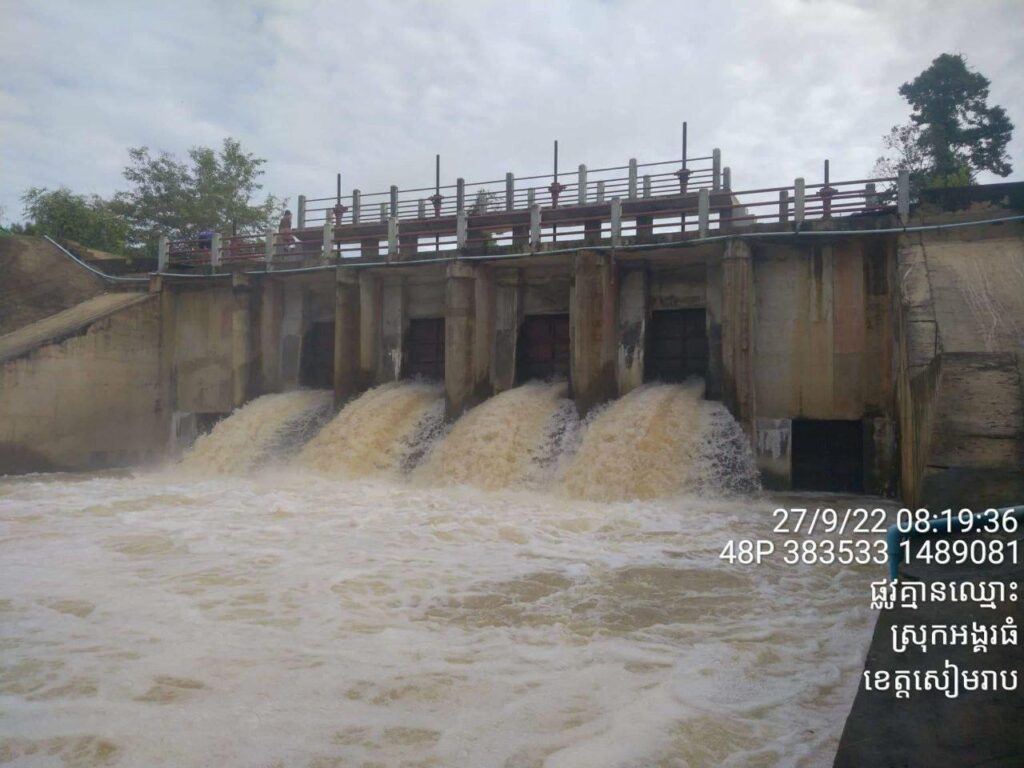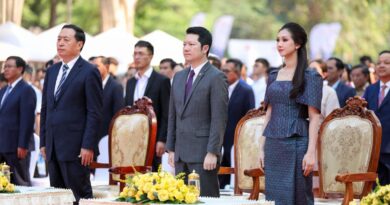នាយដ្ឋានគ្រប់គ្រងទឹក ព្រៃឈើ និងហេដ្ឋារចនាសម្ព័ន្ធ នៃអាជ្ញាធរជាតិអប្សរា បាននិងកំពុងខិតខំរំដោះទឺកតាមទ្វារទឹក និងតំបន់ប្រាសាទមួយចំនួន បង្ការកុំឱ្យជន់លិចប្រាសាទ។
ឥទ្ធិពលនៃព្យុះ ណូរុ ពីប្រទេសហ្វីលីពីន បណ្ដាលឱ្យកម្ពុជារងសម្ពាធទាប និងមានភ្លៀងធ្លាក់ជាបន្តបន្ទាប់ចាប់ពីពាក់កណ្ដាលខែ កញ្ញា មក។ ការណ៍នេះ ធ្វើឱ្យមានភ្លៀងធ្លាក់ជាច្រើនដង និងបណ្ដាលឱ្យជន់លិចស្រុកមួយចំនួនក្នុងខេត្តសៀមរាប។ នៅរមណីយដ្ឋានអង្គរ ទឹកភ្លៀងច្រើនសន្ធឹក ត្រូវបានប្រមូលទុក និងខ្លះត្រូវបានរំដោះចេញផងដែរ ដោយសារបរិមាណហួសកម្រិត។
តាមរបាយការណ៍សង្ខេបពីនាយកដ្ឋានគ្រប់គ្រងទឹក ព្រៃឈើ និងហេដ្ឋារចនាសម្ព័ន្ធ នៃអាជ្ញាធរជាតិអប្សរា ក្រុមការងារបានរំដោះទឹក នៅប្រាសាទមួយចំនួនដូចជា ប្រាសាទអង្គរវត្ត ព្រះខ័ន តាព្រហ្ម និងបាយ័ន្តជាដើម។ល។ បញ្ជៀសទឹកតាមប្រព័ន្ធប្រឡាយបុរាណទៅតាមស្ទឹងនានា ដូចជាស្ទឹងសៀមរាប ស្ទឹងរលួស ស្ទឹងពួក និងស្ទឹងព្រះស្រុក ដើម្បីកុំឱ្យមានផលប៉ះពាល់ជាអវិជ្ជមានដល់តំបន់ប្រាសាទ និងក្រុងសៀមរាប។
ក្រៅពីការងារខាងលើនេះ ក្រុមការងារក៏បានប្រមូលទឹកដើម្បីបំពេញក្នុងប្រព័ន្ធគ្រប់គ្រងបុរាណ ដើម្បីធានាដល់តុល្យភាពនៃការប្រើប្រាស់ទឹកក្នុងតំបន់អង្គរ មានដូចជា បារាយណ៍ខាងលិច បារាយណ៍ខាងជើង កសិន្ធុអង្គរធំ កសិន្ធុអង្គរវត្ត ស្រះស្រង់ រួមនិងកសិន្ធព្រះខ័នជាដើម។ល៕
អត្ថបទ និងរូបភាព៖ នាយកដ្ឋានគ្រប់គ្រងទឹក ព្រៃឈើ និងហេដ្ឋារចនាសម្ព័ន្ធ
APSARA National Authority releasing water from the temple to avoid flooding
The Department of Water, Forestry, and Infrastructure Management of the APSARA National Authority has been working on releasing water through sluices and some temple areas to prevent flooding.
The effects of Typhoon Nuro from the Philippines have been causing Cambodia to experience low pressure and continuous rainfall since mid-September. This caused a flood in some districts in Siem Reap. At the Angkor site, lots of rainwater was collected and excessive amounts of rainwater were even released.
According to a brief report from the Department of Water, Forestry, and Infrastructure Management, the team released water from some temples such as Angkor Wat, Preah Khan, Ta Prohm, and Bayon through the ancient canal system along rivers such as the Siem Reap River, Stung Rolous, Stung Puok, and Stung Preah Srok so as not to negatively impact the temple area and Siem Reap city.
In addition to the above work, the team also collected rainwater to fill the ancient management system to ensure the balance of water use in the Angkor area, such as the western baray, the northern baray, Angkor Thom, Angkor Thom’s moat, Angkor Wat’s moat, Srah Srang, and Preah Khan’s moat. Etc.
Article and Photos: Department of Water, Forestry, and Infrastructure Management





